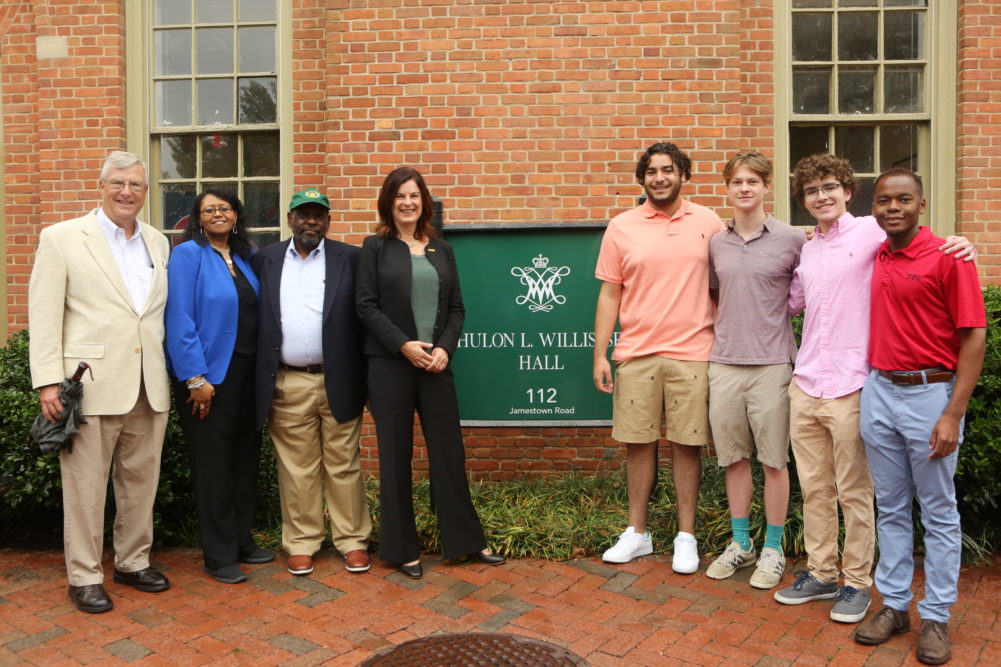
Alumni and Virginia Delta undergrads were among the well-wishers who joined Hulon Willis Jr., William & Mary ’77, at a ceremony on campus to celebrate a significant moment in his family’s history. On Oct. 9, 2021, the university renamed a residence hall previously named for a Confederate Army general after his father. Brother Willis is the son of the first African-American to attend the university.
A World War II veteran, Hulon Willis Sr. earned a bachelor’s degree from Virginia State University. Because there were no comparable graduate programs at the state’s historically Black colleges, his admission to William & Mary was approved by the state attorney general at a time when the university would not admit Black students. Willis Sr. enrolled in 1951, attending classes each summer. Despite the challenges of being the only Black student on campus and threats by some white students to leave a university honor society if he was inducted, Willis Sr. completed his master’s degree in physical education in 1956.
He went on to become a professor and director of the campus police at Virginia State. Willis Sr. also maintained a connection to William & Mary as a member of the parents steering committee and was involved in the recruitment of minority students.

Brother Willis has been actively involved in the university’s Hulon Willis Association, a group dedicated to engaging alumni of Black or African descent and providing scholarships to current students.
Having the building renamed for his father was all the more special because Willis never dreamed his father would be honored in such a way. “I was shocked when President [Katherine] Rowe called to inform me that she wanted to bring the renaming to the Board of Visitors,” he shared.
He added that having a building on campus named for his father is about more than just his family. “Acknowledging the presence and contributions of diverse students opens the door for the recruitment and retention of more students and faculty from diverse communities, enhances minority alumni involvement, and demonstrates the diversity of the academic community.”









Leave a Reply